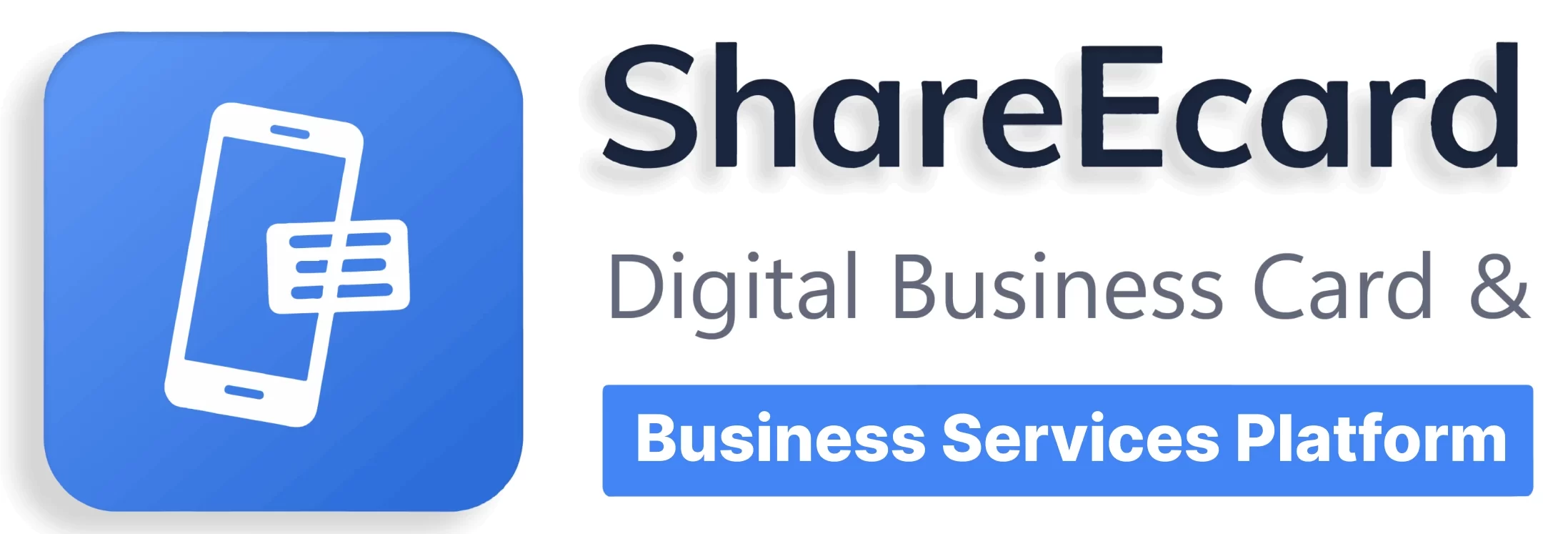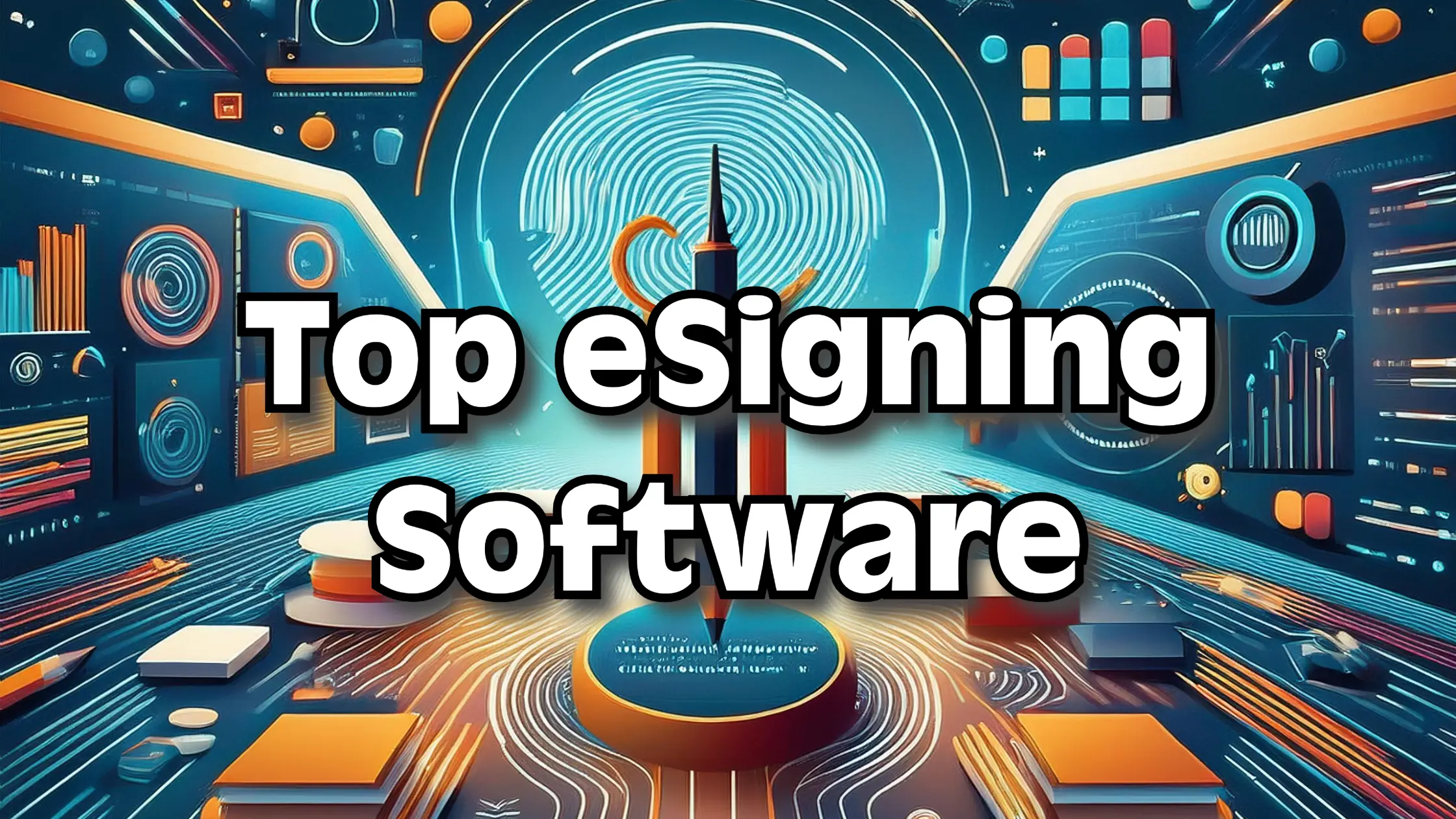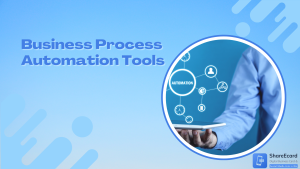In 2024, as businesses increasingly embrace digital transformation, the need for efficient, secure, and legally binding electronic signatures has never been more critical. Whether you’re finalizing a contract, approving a purchase order, or signing an agreement, e-signing software has become an indispensable tool for businesses of all sizes.
The days of printing, signing, scanning, and mailing documents are long gone. E-signing software streamlines this process, enabling you to sign documents from anywhere, at any time, with just a few clicks. Not only does this save time, but it also reduces costs and minimizes the risk of errors or delays.
But with so many options on the market, how do you choose the right e-signing software for your business? The best e-signing solutions in 2024 offer more than just the ability to sign documents electronically. They provide robust security features, ensure compliance with global regulations, integrate seamlessly with your existing business tools, and offer a user-friendly experience for both senders and signers.
In this blog, we’ll explore the top 10 e-signing software solutions of 2024, breaking down their features, pros, cons, and ideal use cases. Whether you’re a small business owner, a legal professional, or a large enterprise, this guide will help you find the perfect e-signing solution to meet your needs and streamline your document workflows. Before diving into the rankings, let’s first discuss the essential criteria you should consider when selecting e-signing software.
Criteria for Selecting E-Signing Software
Choosing the right e-signing software is essential for ensuring that your document workflows are both efficient and secure. Here are the key criteria to consider when evaluating e-signing solutions in 2024:
1. Security and Compliance
Security is paramount when it comes to electronic signatures, as these documents often contain sensitive information. The best e-signing software should use strong encryption methods, offer detailed audit trails, and comply with global regulations like eIDAS in Europe and ESIGN in the United States.
Key Considerations:
- Does the software use advanced encryption standards (e.g., AES-256)?
- Is the software compliant with relevant regulations (e.g., eIDAS, ESIGN, UETA)?
- Does it provide a complete audit trail of the signing process, including time stamps and IP addresses?
2. Ease of Use
The software should be user-friendly, making it easy for both the sender and the signer to complete the signing process without unnecessary complications. An intuitive interface, clear instructions, and a smooth signing experience are crucial for adoption, especially for businesses that require frequent use.
Key Considerations:
- Is the interface intuitive and easy to navigate?
- How quickly can users send and sign documents?
- Does the software offer helpful tutorials or customer support for new users?
3. Integration Capabilities
E-signing software should integrate seamlessly with the other tools and systems you use daily, such as your CRM, ERP, document management system, or cloud storage services. This integration ensures that your workflows remain smooth and that data flows automatically between systems, reducing manual work and the risk of errors.
Key Considerations:
- Does the software integrate with your existing business tools (e.g., Salesforce, Google Drive, Microsoft 365)?
- Are there APIs available for custom integrations?
- How easy is it to set up and maintain these integrations?
4. Customization and Flexibility
Your business may have specific needs when it comes to the signing process. Whether it’s custom branding, multi-step workflows, or specific fields that need to be filled out, the ability to customize the signing experience is crucial. Look for software that allows you to tailor the signing process to your requirements.
Key Considerations:
- Can you customize the appearance of the signature request, such as adding your logo and brand colors?
- Does the software support advanced workflows, like multi-step approvals or conditional routing?
- Is it possible to create and reuse templates for commonly used documents?
5. Mobile Accessibility
In today’s mobile-centric world, being able to send and sign documents from a mobile device is essential. The best e-signing software should offer a mobile app or a responsive web interface that ensures a seamless experience on smartphones and tablets.
Key Considerations:
- Is there a dedicated mobile app for sending and signing documents?
- How well does the software’s mobile interface work on various devices?
- Can users complete the signing process offline, with automatic syncing when they’re back online?
6. Customer Support
Even the most intuitive software may require support at times. Whether it’s setting up the software, troubleshooting issues, or understanding advanced features, responsive and knowledgeable customer support can make a significant difference in your experience.
Key Considerations:
- What support channels are available (e.g., live chat, email, phone)?
- Is customer support available 24/7, or only during specific hours?
- Are there additional resources like FAQs, user guides, or community forums?
7. Cost-Effectiveness
While cost should not be the sole factor in your decision, it’s important to choose software that offers good value for money. Consider not just the upfront cost, but also the long-term pricing model, including any fees for additional users, integrations, or advanced features.
Key Considerations:
- What is the pricing structure (e.g., per document, per user, monthly/annual subscription)?
- Are there any hidden costs for additional features or integrations?
- Does the software offer a free trial or a basic free plan to test before committing?
The Top 10 E-Signing Software in 2024
In this section, we’ll explore the top 10 e-signing software solutions for 2024. Each option has been carefully evaluated based on its features, ease of use, security, integration capabilities, and overall value. Whether you’re a small business owner, a freelancer, or part of a large enterprise, one of these solutions is sure to meet your e-signing needs.
1. DocuSign
- Key Features:
- Industry-leading security with encryption and audit trails.
- Extensive integration options with over 350+ apps, including Salesforce and Microsoft 365.
- Advanced features like Smart Sections, which automate form field completion.
- Pros:
- Highly trusted and widely adopted, with strong compliance across multiple industries.
- User-friendly interface that’s easy to navigate for both senders and signers.
- Customizable templates and branding options.
- Cons:
- Higher cost compared to some competitors, especially for small businesses.
- Some advanced features can be complex to configure.
- Best For: Large enterprises and businesses requiring high security and extensive integrations.
2. Adobe Sign
- Key Features:
- Seamless integration with Adobe Acrobat and Creative Cloud.
- Robust mobile app for signing documents on the go.
- Legal compliance with global e-signature laws.
- Pros:
- Strong integration with the Adobe ecosystem, ideal for businesses already using Adobe products.
- Easy to use, with a clean and intuitive interface.
- Excellent mobile accessibility with a fully-featured mobile app.
- Cons:
- Pricing can be higher for premium features.
- Some users report that customer support can be slow.
- Best For: Creative professionals and businesses that heavily use Adobe products.
3. HelloSign (by Dropbox)
- Key Features:
- Simple and intuitive interface with deep integration into Dropbox.
- Customizable signing requests with branding options.
- Strong security with audit trails and encryption.
- Pros:
- Easy to use, especially for businesses already using Dropbox.
- Affordable pricing with a free tier for basic use.
- Reliable customer support and a strong user community.
- Cons:
- Limited advanced features compared to more expensive solutions.
- Fewer integrations outside of Dropbox compared to competitors.
- Best For: Small to medium-sized businesses and freelancers who use Dropbox.
4. SignNow
- Key Features:
- Advanced workflow automation for multi-step approvals and document routing.
- Affordable pricing plans that cater to small and medium-sized businesses.
- Integration with popular tools like Salesforce, G Suite, and Office 365.
- Pros:
- Strong value for money with a comprehensive feature set at a lower cost.
- Excellent for businesses needing advanced workflow automation.
- Responsive customer support with extensive online resources.
- Cons:
- User interface is less polished than some competitors.
- Some users report occasional issues with integrations.
- Best For: SMBs looking for affordable, yet powerful e-signing and workflow automation.
5. PandaDoc
- Key Features:
- Built-in document creation and management tools with customizable templates.
- Real-time document tracking and notifications.
- Integration with CRMs like HubSpot, Salesforce, and Pipedrive.
- Pros:
- Excellent for businesses that need both document creation and e-signing capabilities.
- User-friendly interface with drag-and-drop functionality.
- Strong analytics and tracking features.
- Cons:
- Higher pricing for advanced features and larger teams.
- Some users find the document editor less intuitive.
- Best For: Sales teams and businesses needing an all-in-one document management and e-signing solution.
6. SignEasy
- Key Features:
- Simple, easy-to-use interface with no learning curve.
- Mobile-first design, perfect for signing documents on the go.
- Integration with popular tools like Google Drive, Dropbox, and Slack.
- Pros:
- Very user-friendly, with a focus on ease of use and mobility.
- Affordable pricing, with a solid free tier for occasional users.
- Great for businesses that need quick, no-fuss e-signing.
- Cons:
- Limited advanced features compared to more comprehensive solutions.
- Basic customization options for document templates.
- Best For: Freelancers, small businesses, and professionals who need a straightforward e-signing tool.
7. OneSpan Sign
- Key Features:
- High-security features, including biometric authentication and advanced encryption.
- Extensive compliance certifications, including SOC 2, ISO 27001, and GDPR.
- Flexible deployment options, including on-premise, cloud, and hybrid.
- Pros:
- Ideal for industries with strict security and compliance requirements.
- Highly customizable workflows and document processes.
- Strong integration with enterprise systems.
- Cons:
- More complex to set up and use, requiring technical expertise.
- Higher cost, suitable for larger enterprises.
- Best For: Financial services, healthcare, and other regulated industries.
8. FacePDF
- Key Features:
- Seamless integration with PDF editing tools for comprehensive document management.
- Strong security features, including document encryption and audit trails.
- Customizable e-signature workflows with support for multi-step approvals.
- Pros:
- Ideal for businesses that need both PDF editing and e-signing capabilities.
- Affordable pricing with a strong set of features even at lower tiers.
- User-friendly interface with easy-to-use tools for document preparation and signing.
- Cons:
- Limited third-party integrations compared to top competitors.
- Mobile app functionality is not as robust as desktop features.
- Best For: Small to medium-sized businesses that frequently work with PDF documents and need an integrated solution for editing and signing.
9. RightSignature (by Citrix)
- Key Features:
- Simple, straightforward interface designed for quick document signing.
- Integration with Citrix ShareFile and other Citrix tools.
- Customizable templates and branding options.
- Pros:
- Easy to set up and use, with a focus on simplicity.
- Affordable pricing, with plans that cater to small businesses.
- Strong support for Citrix users and integration with Citrix products.
- Cons:
- Limited advanced features and integrations outside of the Citrix ecosystem.
- Basic analytics and reporting tools.
- Best For: Small businesses and Citrix users needing a simple e-signing solution.
10. eversign
- Key Features:
- Comprehensive document management features with audit trails and history.
- Customizable workflows with multi-party signing capabilities.
- Affordable pricing with a strong free tier for basic users.
- Pros:
- Great value for small businesses and startups.
- Easy to use, with a clean and intuitive interface.
- Strong security features and compliance with industry standards.
- Cons:
- Limited integrations compared to more established players.
- Basic customer support options.
- Best For: Startups, small businesses, and freelancers looking for a cost-effective e-signing solution.
11. KeepSolid Sign
- Key Features:
- Offline signing capabilities with automatic syncing when online.
- Strong encryption and security features, including two-factor authentication.
- Integration with major cloud storage services like Google Drive and Dropbox.
- Pros:
- Excellent for users who need to sign documents without an internet connection.
- Strong security features for peace of mind.
- Affordable pricing, with a focus on small businesses and individuals.
- Cons:
- Fewer advanced features and customization options.
- Limited customer support outside of standard business hours.
- Best For: Professionals and small businesses that need secure, offline e-signing capabilities.
Comparison Table
To help you make an informed decision, here’s a side-by-side comparison of the top 11 e-signing software options in 2024. This table highlights key features, pricing, integration capabilities, and other essential criteria, making it easier to see how they stack up against each other.
| Software | User-Friendliness | Customization | Integration Capabilities | Security & Compliance | Mobile Accessibility | Pricing | Best For |
| DocuSign | Very easy | High | Excellent (350+ integrations) | Top-tier (SOC 2, GDPR, eIDAS) | Strong (fully featured app) | $$$ | Large enterprises, security-focused |
| Adobe Sign | Easy | Moderate | Excellent (Adobe ecosystem) | Strong (SOC 2, eIDAS) | Excellent (full app support) | $$$ | Creative professionals, Adobe users |
| HelloSign | Very easy | Moderate | Good (Dropbox integration) | Strong (SOC 2, eIDAS) | Good (basic app support) | $$ | SMBs, freelancers using Dropbox |
| SignNow | Moderate | High | Good (Salesforce, G Suite) | Strong (SOC 2, GDPR) | Good (mobile app available) | $$ | SMBs needing workflow automation |
| PandaDoc | Easy | High | Good (CRM integrations) | Strong (SOC 2, GDPR) | Good (mobile app available) | $$$ | Sales teams, document management needs |
| SignEasy | Very easy | Limited | Basic (Google Drive, Slack) | Strong (SOC 2, GDPR) | Excellent (mobile-first design) | $ | Freelancers, quick e-signing on the go |
| OneSpan Sign | Moderate | High | Excellent (enterprise systems) | Excellent (SOC 2, ISO 27001) | Good (enterprise focus) | $$$$ | Financial services, regulated industries |
| FacePDF | Easy | Moderate | Good (PDF editing tools) | Strong (document encryption) | Moderate (mobile support improving) | $ | SMBs, PDF-centric workflows |
| RightSignature | Very easy | Moderate | Good (Citrix integration) | Strong (SOC 2, eIDAS) | Good (basic app available) | $$ | Citrix users, SMBs needing simplicity |
| eversign | Easy | Moderate | Limited (basic integrations) | Strong (SOC 2, GDPR) | Good (mobile app available) | $ | Startups, cost-conscious SMBs |
| KeepSolid Sign | Moderate | Limited | Basic (cloud storage integration) | Strong (AES-256 encryption) | Good (offline signing available) | $ | SMBs, offline signing needs |
Key to Pricing:
- $ = Affordable (often free or low-cost plans available)
- $$ = Moderate (mid-range pricing, suitable for small businesses)
- $$$ = Expensive (higher pricing tiers, better suited for growing businesses)
- $$$$ = Premium (high-end pricing, tailored for larger enterprises)
Comparison Insights:
- User-Friendliness: DocuSign, HelloSign, and SignEasy stand out for their ease of use, making them ideal for businesses and individuals who need to get started quickly without a steep learning curve.
- Customization: SignNow, PandaDoc, and OneSpan Sign offer extensive customization options, allowing businesses to tailor their signing processes to specific workflows, which is especially important for larger or more complex organizations.
- Integration Capabilities: DocuSign and Adobe Sign excel in integrations, particularly with popular enterprise tools and platforms, making them ideal for businesses that rely on a connected software ecosystem.
- Security & Compliance: OneSpan Sign and DocuSign provide top-tier security features, including compliance with global standards like SOC 2 and GDPR, making them suitable for industries where security and compliance are critical.
- Mobile Accessibility: SignEasy and Adobe Sign offer strong mobile experiences, which are crucial for businesses and professionals who need to sign documents on the go. KeepSolid Sign also offers unique offline signing capabilities.
- Pricing: eversign and SignEasy offer great value for small businesses and freelancers, with affordable pricing plans that still provide robust e-signing capabilities. FacePDF also offers good value, particularly for businesses that frequently work with PDF documents.
This comparison table provides a clear overview of how each software stacks up against the others, helping you identify which solution best fits your specific business needs, whether you’re focused on security, ease of use, or cost-effectiveness.
How to Choose the Right E-Signing Software for Your Business
Selecting the right e-signing software for your business can significantly impact your workflow efficiency, security, and overall productivity. Here’s a step-by-step guide to help you make an informed decision:
1. Identify Your Specific Needs
Before diving into specific software options, take a close look at your business’s unique requirements. Consider the volume of documents you need to sign, the complexity of your signing workflows, and the level of customization you require.
Questions to Ask:
- How many documents do you need to sign each month?
- Do you need multi-step approval processes or simple one-step signatures?
- Is there a need for custom branding or specific fields on your documents?
2. Evaluate Security and Compliance
Security should be a top priority, especially if you’re handling sensitive or legally binding documents. Ensure that the e-signing software you choose complies with industry standards and regulations such as SOC 2, GDPR, and eIDAS.
Questions to Ask:
- Does the software provide strong encryption and secure storage of signed documents?
- Is the software compliant with relevant regulations in your industry or region?
- Can the software provide detailed audit trails for each signed document?
3. Consider User Experience
A smooth, intuitive user experience is crucial for both you and your clients. The easier the software is to use, the more likely it will be adopted widely across your organization and by external partners.
Questions to Ask:
- Is the software easy to navigate, with a clear and intuitive interface?
- How quickly can you send and sign documents?
- Does the software offer a mobile app or a responsive web interface for signing on the go?
4. Test with a Free Trial or Demo
Most e-signing software providers offer free trials or demos. This is an excellent opportunity to see if the software meets your expectations and fits into your existing workflows.
Questions to Ask:
- Does the software integrate well with your existing tools during the trial?
- Are all necessary features available in the trial version?
- How easy is it to onboard your team and get them using the software?
5. Read User Reviews and Case Studies
User reviews and case studies can provide valuable insights into how the software performs in real-world scenarios. Look for reviews from businesses similar to yours to see how the software has helped them.
Questions to Ask:
- What do other users in your industry say about the software?
- Are there any recurring issues mentioned in reviews?
- How has the software helped other businesses solve their e-signing challenges?
6. Plan for Scalability
Your business’s needs will likely grow over time, so it’s important to choose software that can scale with you. Consider whether the software can handle an increase in document volume, additional users, and more complex workflows as your business expands.
Questions to Ask:
- Does the software offer scalable plans that can grow with your business?
- Can it handle an increase in transaction volume and more complex workflows?
- Are there options to add more users or features as needed?
Conclusion
Choosing the right e-signing software in 2024 is crucial for optimizing your document workflows, ensuring compliance, and maintaining high levels of security. Each of the top 11 software options we’ve discussed offers unique strengths, whether you need advanced security features, seamless integration, or a user-friendly interface.
When making your decision, start by assessing your business’s specific needs and considering how each software aligns with those requirements. Take advantage of free trials and demos to get a firsthand experience of the software, and don’t hesitate to read reviews and consult experts to make the most informed choice.
Ultimately, the best e-signing software for your business will be one that integrates smoothly into your existing processes, provides the necessary features and security, and scales with your growth. By carefully evaluating your options using the criteria and comparisons outlined in this guide, you’ll be well-equipped to select a solution that drives efficiency and success for your business.




